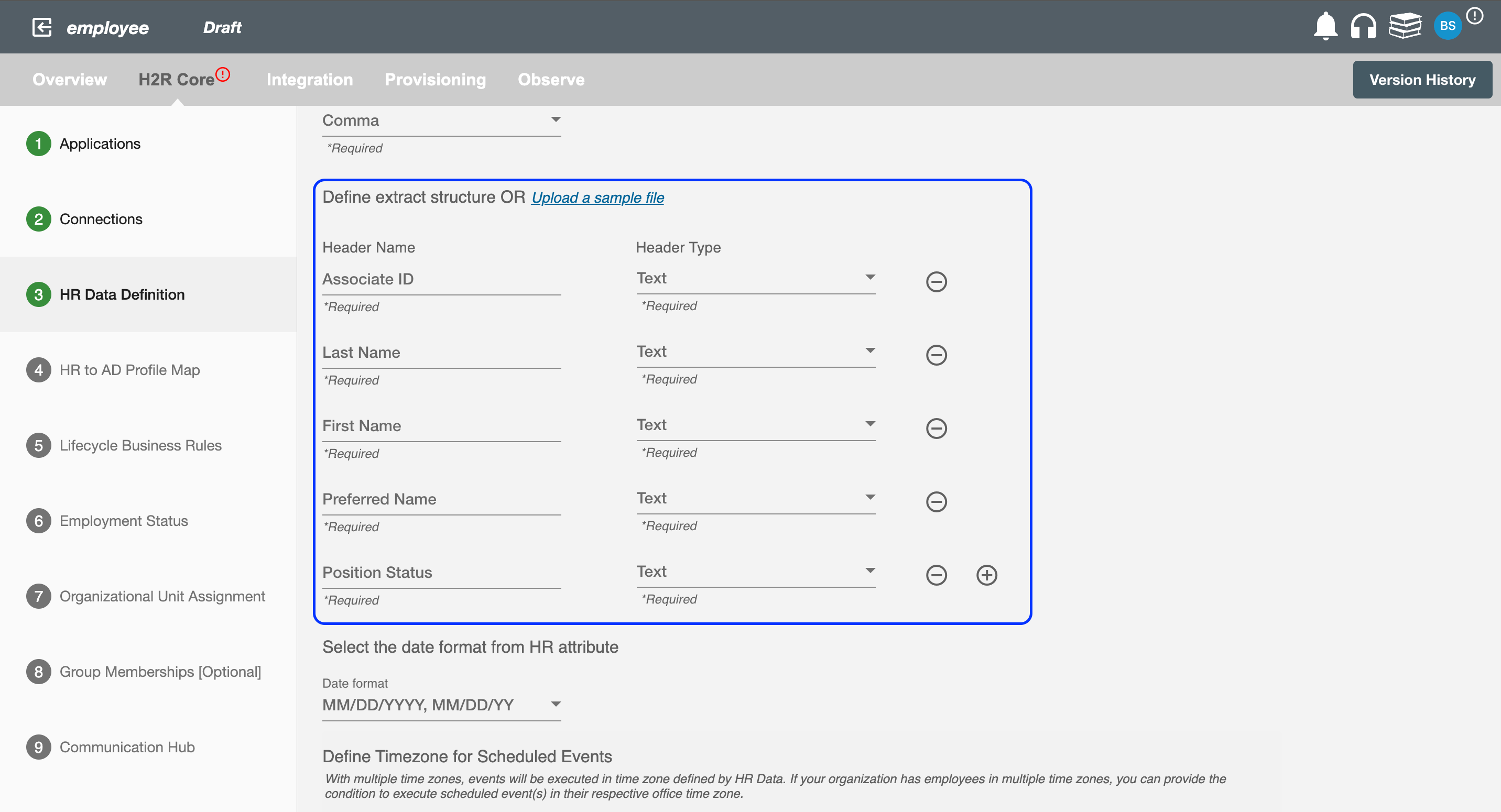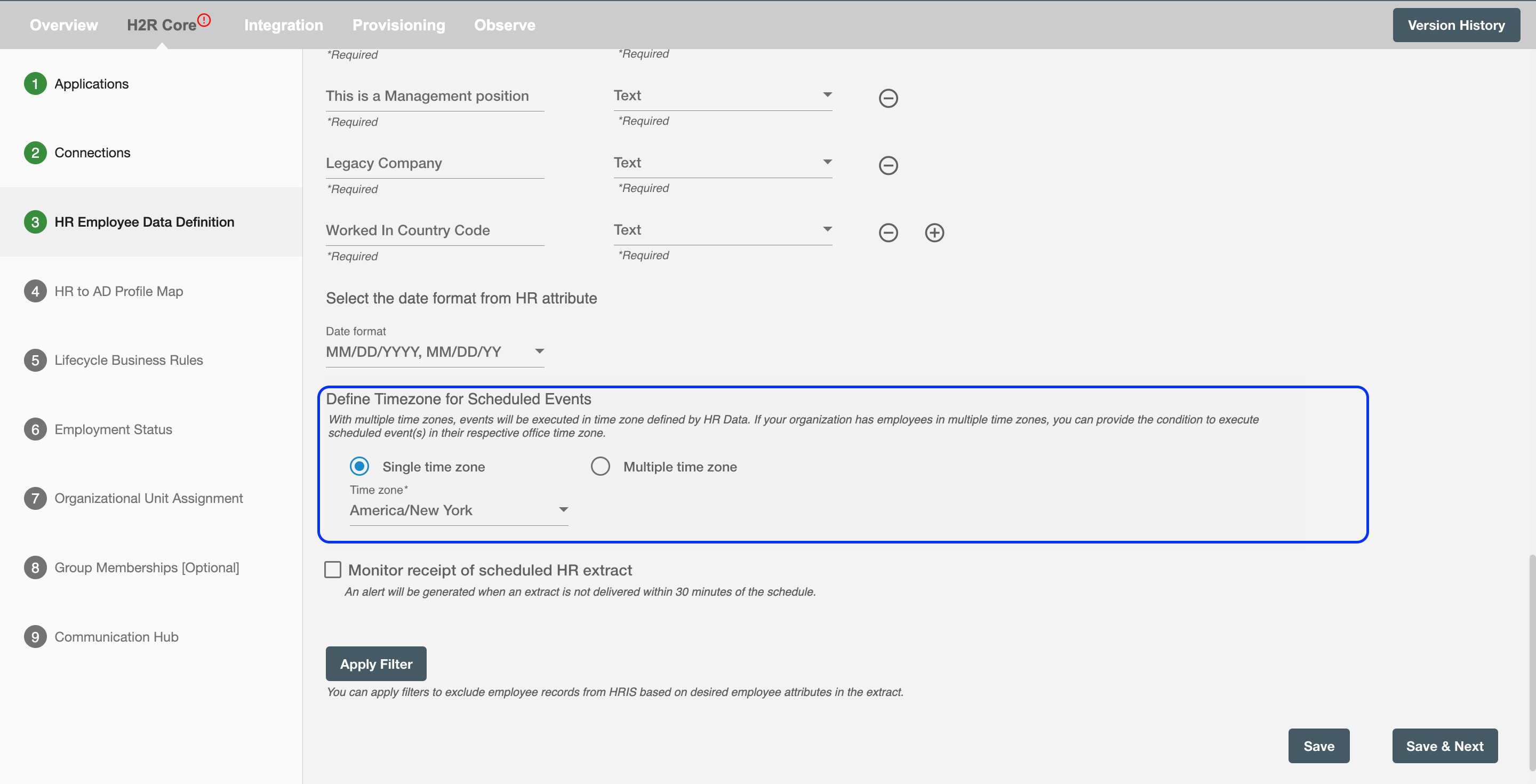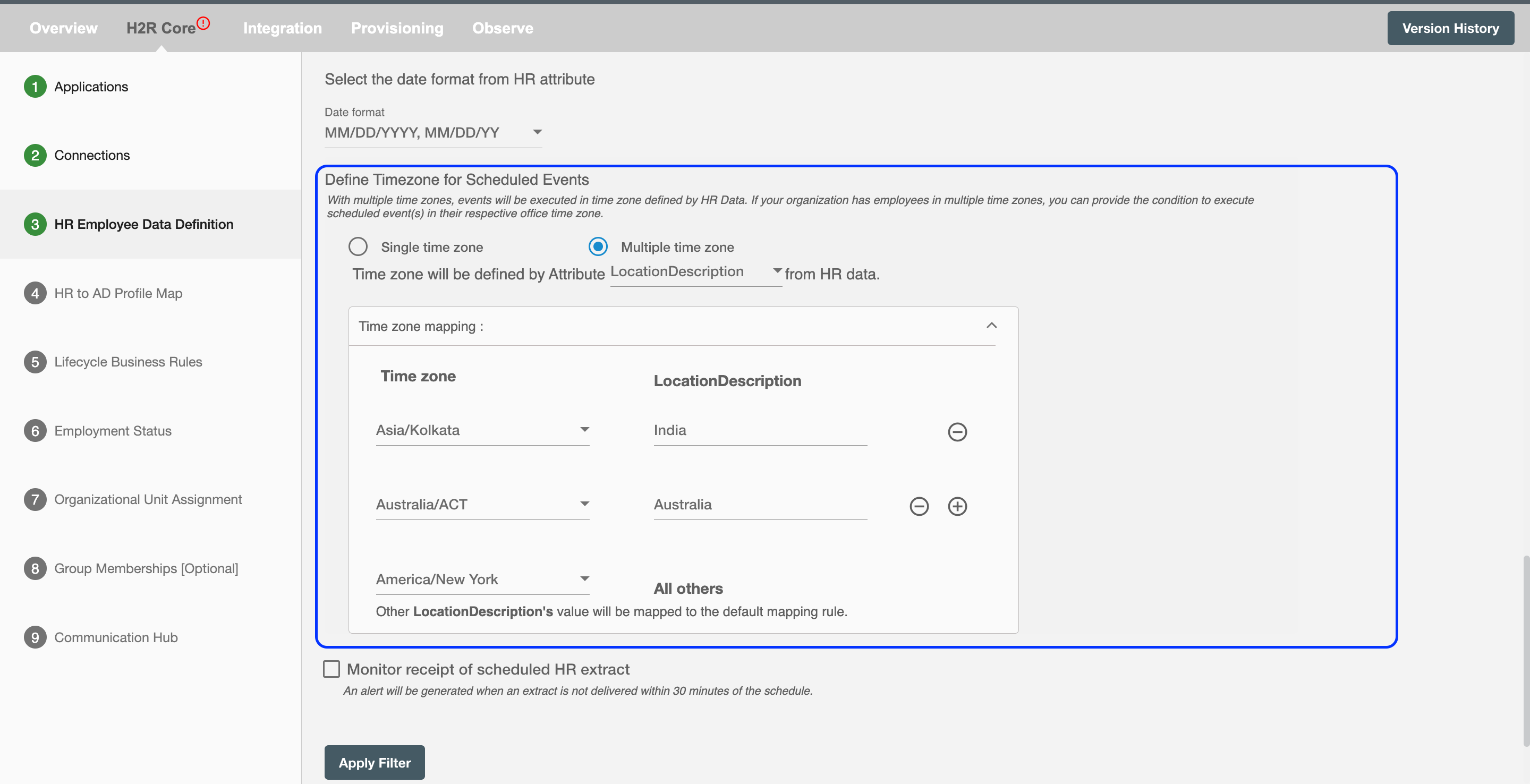HR Data Definition
In this step, you will define the file structure of the employee extract that HR platform will send to Hire2Retire workflow. At runtime, the workflow will validate the file structure before further processing individual employee records.
CSV Filename¶
You need to give a target CSV file name or pattern that Hire2Retire integration is listening to for the incoming HR Data.
For example, if HR report come with pattern employee_employee_*

Select Delimiter¶
Choose the delimiter which is used in your delimited file. If the delimiter of choice is not available in the dropdown, you can write a custom one using the "Other" option.

Upload CSV¶
Entering all the headers manually can be a tedious task. You can upload a sample CSV file from your device and all the header name in the CSV file will automatically added. The uploaded file should use the same delimiter which is selected in above menu item.

Headers details of CSV file¶
Set up all the values of the column header which you will find at the top row in your CSV file. At runtime, the workflow will validate the file first and break each record into independent events.
You can add column headers along with column header type by clicking the plus button and delete the incorrect column header value by clicking the minus button.

Please make sure the column headers you put match the header column in the CSV file. It will reject the file if the headers in the actual file do not match the column headers defined in workflow.
And, if you have enabled 'Future Hire, Rehire and Termination' on Application page then the following fields will appear like (Date Format and Time Zone).
Select Date Format¶
Select the date format of the HR attributes that are of date type. The default date format is MM/DD/YYYY, MM/DD/YY.

Select Time Zone¶
Choose the time zone in which you want to process the scheduled hire, rehire and termination records.
Single time zone¶
All the scheduled hire, rehire and termination events will be executed in a selected time zone. The default time zone is America/New York.

Multiple time zone¶
Here, scheduled hire, rehire and termination records will be executed in the time zone based on the condition defined by HR data. For eg. An organization can have multiple offices at different locations (time zones) for which they can select respective time zones according to their locations.

Apply Filter¶
Hire2Retire enables you to process specific events and filter out the rest by defining filter criteria. On clicking the "Apply Filter" button, you will be able to set up conditions using employee attributes. Only employees who match the conditions will be processed.
